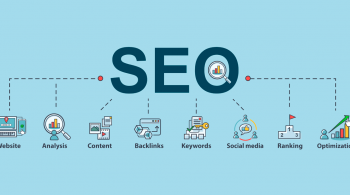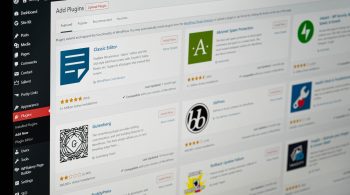Small and medium-sized businesses (SMEs) are constantly looking for ways to expand their reach online, and social media marketing plays a huge role in building a solid digital presence. When it comes to social media platforms, Facebook is still the absolute champion.
Why does Facebook have a great place to advertise ? Let these numbers not lie for you.
- Facebook is the most popular social network, with 60.6% of all internet users .
- More than 200 million small and medium businesses use Facebook tools to grow their presence globally.
- Over 98% of active Facebook users use mobile devices on a daily basis.
- To shop on the internet, 63% of shoppers use Facebook.
- 90 million small businesses use Facebook for advertising.
- Two-thirds of Facebook users browse local business pages weekly.
With Facebook Shops , businesses can create a unique, personalized and shopper-friendly online platform to tap into Facebook Marketing ‘s massive user base .
This article will focus on how to incorporate Facebook Shop into your business strategy. We’ll explore the key benefits of this feature, share step-by-step instructions on how to set up your store, along with Facebook Shop examples, etc.
What is Facebook Shop?
Facebook introduced Facebook Shops in 2020 for small and medium businesses with the goal of easing the online customer buying process. It is a native eCommerce solution where buyers can browse, share and purchase products directly from the store.
Facebook Shops is a shopping experience that allows businesses to easily sell their products on Facebook and Instagram. Sellers can set up a custom online store without coding, promote items through Stories, and connect with customers.
Of course, Facebook Shop can provide a great opportunity for those of you who want to reach your target audience on Facebook easily. According to a report from marketingdive , up to 57% of customers say that social media can have a great influence on their purchasing decisions.
Creating a Shop Facebook account is free, and having a Shop page is like having a shop on your Facebook or Instagram account. You can offer products from your catalog and customize your store to match your brand .
Facebook Shop’s mobile app priority feature allows sellers and buyers to transact in one place. It’s a big step that experts in the e-commerce industry call ” F-commerce “. This is where purchases and sales happen on Facebook from start to finish.
Is Facebook Shop different from Facebook Page Shop?
Just hearing it can be confusing, but Facebook Shop and Facebook Page Shop are not the same. The Facebook Page Shop allows you to sell products directly from your Facebook Business Page. When a customer clicks on an item, they check it out on your website.
Facebook Shop, on the other hand, adds a storefront to an existing Facebook Page store and offers a more streamlined purchase plan that allows them to pay without leaving the platform.
How does Facebook Shop work?
Facebook Shops allows you to create Instagram and Facebook shops from a commerce manager. Like other eCommerce platforms, this tool requires no coding or technical skills. All you need is a US bank account and tax identification number.
You can build a store from scratch and manage it within the Facebook ecosystem. Facebook Shops is an end-to-end shopping solution that includes advertising, sales, marketing, and customer support. However, you can also add a store built on other platforms. Facebook supports integration with Shopify, BigCommerce, WooComerce, etc.
Announcing the Store feature, Facebook claims it’s a mobile-first tool. Therefore, Facebook Shops works perfectly for mobile shopping. Furthermore, each store created with this service automatically adapts to any device type and screen resolution.
Facebook Shops allows you to create product collections, so you can organize your items and make your store browsing more convenient. In addition, the seller can change the store’s design, color, pattern, etc.
Another feature of Facebook’s eCommerce platform is its built-in analytics. Commerce Manager provides users with detailed information about their store’s performance. The metrics you can see depend on the type of store you’ve created. For example, if you launch a store on Facebook, you will be able to track sales, visitors, etc. If you have connected an existing store to Facebook, Commerce Manager will show clicks on product detail page (PDP click) to website and sessions.
Customers can access your Facebook Store from your main Facebook page, Instagram profile, or through Shopping on Instagram.
Facebook Shops allows potential customers to contact you through WhatsApp, Instagram Direct or Facebook Messenger. Here they can ask questions, get support, or track deliveries. Better yet, in the future, Facebook will allow users to make purchases directly in the Messenger app.
Remember, despite launching in 2020, Facebook Shops is currently still a relatively new feature. Even so, you should still consider using this eCommerce platform as it offers compelling benefits for your business.
Benefits of Facebook Shops
More than 80 million small businesses worldwide have pages on Facebook. This made Facebook Shops a great decision for them because they were on the social network. However, Facebook Shops have a bunch of other benefits – unpack them one by one.
Reach a promising audience
Facebook gathers the most promising audiences. According to the Pew Research Center, 74% of people who earn more than $75,000 per year have an account on the network. It makes Facebook the second center of attraction for high earners, after YouTube.
Better yet, a large portion of this audience is already buying. In the US, 15% of social media users shop or browse products on Facebook. Worldwide, 74% of consumers use social networks, including Facebook, for shopping ideas.
Provides access to the Meta . ecosystem
You can promote your products on Facebook networks like Facebook groups, Facebook Page shop, Facebook Marketplace and shop on Instagram. You can even open a checkout on WhatsApp.
Expanding advertising campaigns
You can increase product discovery using Facebook Live, Instagram Stories, Facebook posts, etc. You can catalog your products before going live to create a natural buying experience for your product. client.
Reduce marketing costs
Frankly, Facebook is not considered the cheapest marketing channel. Targeted advertising on this platform requires a certain investment, although it offers excellent results. Building an online community on this social media platform also takes a lot of time and effort.
However, there is a trick you can use to do cost-effective marketing with Facebook. The platform accounts for more than 80% of social referrals to eCommerce sites in the US. In turn, referrals are one of the most powerful channels for customer acquisition.
Facebook shop allows users to share items and collections via messenger and easily copy links. So your mission is to encourage customers to share your products on Facebook.
Connect with customers
63% of U.S. consumers say quick responses and solutions are important to quality customer service. More than half of customers say it is essential to have convenient ways to reach retailers and brands.
Meanwhile, customers prefer messaging apps to communicate with sellers – 45% of global consumers have contacted a business directly through messaging. That is, nearly a quarter of buyers make purchases directly through messaging services.
Facebook Shop is supported linking your online store with WhatsApp, Facebook Messenger and Instagram Direct. That makes the platform perfect for maintaining relationships with consumers and providing the support they need.
To stay on track 24/7, consider connecting a chatbot to your Facebook Shop. This will help you to immediately resolve the most common problems your customers face.
Mobile-friendly
A poorly designed mobile website will undermine all your efforts to build and promote an online store.
57% of customers would not recommend a website with an inconvenient mobile version. 50% of buyers will stop visiting a poorly optimized web store, even if they like the company.
Meanwhile, 96% of active Facebook users access the platform through a mobile device. Furthermore, more than half of internet traffic worldwide comes from mobile devices. This makes mobile-friendliness important for online merchants and stores.
Facebook created its own eCommerce platform with mobile users in mind. Facebook Shops allows you to create responsive storefronts on Facebook and Instagram and literally customize them with just one click.
Seamless customer experience
73% of customers say a good customer experience helps drive their purchase decision. Ultimately, a good customer experience leads to increased sales and revenue.
Facebook Shops is designed to provide a seamless experience for customers. Customers browse Facebook, easily access a store from the search results page, find collections and items of interest to them, ask questions in the messenger and make purchases from the online store page on Facebook. Facebook.
Simply put, Facebook Shops provides your business with a range of benefits that support your day-to-day running of an online store. You may be wondering if such a tool is expensive or free. We will explore that in the next section.
Some restrictions on stores on Facebook
Although Facebook Shop has many advantages, there are still some things worth noting.
Comes with a small fee
If you build a store in Commerce Manager from scratch and allow customers to checkout on Facebook or Instagram, you’ll need to pay a sales fee. Facebook automatically deducts the required amount from your payment.
The selling fee depends on the total order. For purchases over $8, Facebook will charge 5% of each order. If an order costs less than $8, your fee will go up to $0.40. Let’s explain some numbers to make things easier to understand.
Imagine that you sell a pair of running shoes for $15 to one customer and a pair of socks for $3 to another. For your first order, Facebook will charge you 5% of the price, or $0.75. For the second one, you will have to pay $0.40.
If you sell all socks and shoes to one customer and ship it as a single shipment, you will pay 5% of the total amount. So the sales charge for the $18 shipment would be $0.90.
Facebook charges this to cover the cost of maintaining their service and processing payments. Plus, the sales fee already includes your taxes, so you don’t have to cross the red ribbon yourself. If you liked this option, read on – we’ll walk you through the Facebook Shop setup process.
Lack of other selling features
Facebook doesn’t allow merchants to insert promo codes and referral programs into their stores.
Show the exclusivity of Facebook
While there are billions of Facebook users worldwide, hundreds of billions of others don’t use it. If you only use Facebook Shops, you’ve limited yourself to a specific target audience.
Show negative comments
The Facebook comments section can make or break a post. Facebook Shop can expose your business to negative comments or critical reviews, even if they are unfounded.
How do I create a Facebook Shop?
Facebook designed Shop as an easy and affordable tool for small businesses, so setting up your store here is as easy as pie. However, there are certain requirements you need to meet before creating your Facebook Shop.
- A Facebook Profile profile and a Facebook Business page associated with it.
- Your Facebook page must have at least 2000 likes.
- Your product must be physical; No digital items are allowed.
- Your business must have a legal license to operate in the country in which you are selling.
- You must have a Tax Identification Number (TIN).
- You must have a valid bank account with your Facebook name.
You have 2 options to sign up for Facebook Shops: Through Commerce Manager and through eCommerce platform integration. The rest of the Facebook Shop interface will guide you through the process step by step.
Steps to create Facebook Shop with Commerce Manager
1. Create Commerce Manager
Go to Facebook’s Commerce Manager and create a new account. Select “Set up Commerce Manager” to create a native Facebook Shop from scratch.
2. Fill in your business information
In the next step, you’ll need to set up your business information. Click the “Set Up” button to go further.
Fill in your merchant account name, such as “Wow Running Shoes”. The trick here is to name your business for the new account so customers can easily recognize you.
On the next screen, connect your Facebook page to your new Commerce account. If you have more than one site, choose the right one for your new account. For example, it is better to connect the Wow Running Shoes store to the Wow Running Shoes page instead of your personal account. One important thing to remember – your site must be connected to at least one Business Manager account.
Go ahead, link your Business Manager account and click “Finish setup”. If you have multiple Business Manager profiles, Facebook will show you each of them. Choose the one that suits your new store. Remember that you can’t change your account once you’ve connected to the store.
3. Configure your settings
In the next step, Facebook will redirect you back to the original to allow you to configure your settings. To get the ball rolling, you’ll need a category – create a new category or add one you created earlier. You can only connect one category, but you can change the products in that category any time you want.
Then move on to setting up shipping options. Choose a price and term for standard, express, and expedited delivery. According to Facebook’s rules, you must ship within three days of the customer placing an order.
Once you’re done, click “Next” and fill out your return policy. Choose the amount of time your customers have to return their orders to you and add a customer service email. These details are very important, so without them, Facebook will prohibit you from proceeding with the account setup.
4. Fill in the Payments section
Select “Get Started” under “Payments” on the initial screen. Add your bank account details – you need a US bank account to continue. Facebook will send payments to the account you provided here.
Then, select the category you sell from the drop-down menu. For example, for a brand of running shoes, they can be clothing or clothing.
In the next step, select the state in which you do business. Provide your tax registration number if you have a brick-and-mortar store in this state. You can skip this stage if you only work in eCommerce or if the Facebook Shop you are creating is your first business experience.
Next, you will see the Tax & Representation page. Choose your business type and add personal data for your business representative.
That’s it – your Facebook Shop is set up. You can now move on to adding products to your catalog and styling your storefront. It’s a pretty easy and intuitive process. However, if you need help, follow the instructions from Facebook. Here are some guidelines that will help:
- How to create a collection
- How to add sections to your store layout
Steps to create a Facebook store using an e-commerce website
Many new eCommerce platforms automatically create a Shop Facebook page for you. That means you’ll be able to manage all your orders and products on your eCommerce page and seamlessly link to Facebook.
Do like that:
Step 1: Link your Facebook account and install the app from your eCommerce site (e.g. Shopify, BigCommerce, WooCommerce).
Step 2: Sign in to the app with your preferred Business Manager account.
Step 3: Create a Facebook Page and account with Commerce Manager.
Step 4: Upload your product images in bulk. You can also build a profile on Facebook to promote your items.
Step 5: Wait for Facebook to approve your request.
Once approved, your product will be displayed in the Shop, ready for purchase.
What are the best practices for using a Facebook shop?
Use the following techniques to get the most out of your Facebook Shop:
- Increased visual impact. Upload eye-catching product images and provide short and concise descriptions.
- Put your best items on the screen. Showcase the products in your collection that are popular with your target audience.
- Answer questions promptly. There is nothing more frustrating for potential buyers than an unresponsive seller.
- Choose a name wisely. Choose one that accurately reflects your brand and company.
- Keep track of your inventory. There’s nothing worse than finding out the item is out of stock when you’re about to pay for it.
- Check the comments section often. If someone writes a bad review, ask how you can improve your service. If there’s a baseless comment, answer it politely. Never start a war online.
- Get the most out of Facebook’s features. Don’t just keep your store’s products to a minimum. Share them on your other Facebook pages.
Grow your Facebook store with Facebook Ads
Opening a Facebook Shop without ads is like throwing a party and not sending out invitations. Luckily, Facebook offers several ways to feature your new Store in ads.
You can feature a product or a collection in a Facebook or Instagram ad. You can place ads in News Feed or in Stories. And Facebook even allows you to place a direct link to your Store in your ad so customers just need to click.
To start promoting your Store, make sure you have a solid advertising strategy in place. Then, test multiple ad types to see which works best for your audience.







